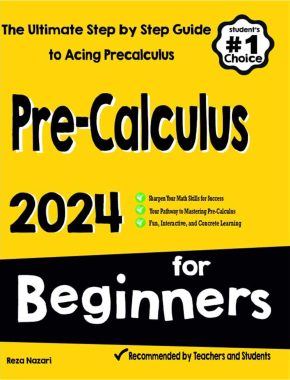What Are The Optimization Problems: Beginners Complete Guide
In optimization problems, we seek the highest or lowest values of a function, crucial in fields like economics, engineering, and physics. This involves identifying an objective function and its constraints, using derivatives to locate critical points, and employing tests to determine whether these points are maxima or minima. The process finds practical solutions, such as maximizing a box's volume with limited materials, illustrating the real-world application of optimization in design and resource management.

Overview:
In optimization problems, we find a function’s highest or lowest value, useful in economics, engineering, and physics. First, we define the goal (objective function) and limits (constraints). Then, we differentiate the objective function and set this derivative to zero to find critical points, which may be the function’s maximum or minimum. We check these points and the domain’s endpoints to find the absolute maximum and minimum. The second derivative test helps confirm if these are local maxima or minima.
Steps in Solving Optimization Problems
- Understand the Problem: Clearly define the objective and constraints.
- Identify the Objective Function: Formulate the function that needs to be optimized.
- Express Constraints: If applicable, express constraints in terms of the variables in the objective function.
- Find the Derivative: Differentiate the objective function with respect to its variable(s).
- Critical Points: Solve for points where the derivative is zero or undefined, as these are potential candidates for maxima or minima.
- Analyze Critical Points: Use the first or second derivative test to determine if these points are maxima, minima, or neither.
- Check the Endpoints: If the domain is closed and bounded, evaluate the function at the endpoints.
- Determine the Optimal Value: Compare values at critical points and endpoints to find the maximum or minimum value.
- Interpret the Results: Relate the mathematical solution back to the real-world context of the problem.
Derivative Tests
- First Derivative Test: Examines where the function’s derivative changes sign.
- Second Derivative Test: Evaluates the concavity of the function at critical points; a positive second derivative suggests a minimum, while a negative one indicates a maximum.
Common Pitfalls
- Misidentifying the Objective Function: Ensure that the function accurately represents what needs to be optimized.
- Overlooking Constraints: Not incorporating all constraints can lead to incorrect solutions.
- Domain Issues: Failing to consider the entire domain can miss potential solutions.
- Misapplication of Derivative Tests: Incorrect use of these tests can lead to wrong conclusions about critical points.
Optimization problems in calculus are fundamental in understanding how to maximize or minimize functions, a concept widely applied in various fields. Here’s a comprehensive guide for students:
Example Problem
- Problem Statement: Maximize the volume of a box with a given surface area.
- Objective Function: Volume of the box, ( V = xyz ).
- Constraints: Surface area ( S = 2(xy + yz + zx) ) is constant.
- Solution Steps:
- Express one variable in terms of the others using the constraint.
- Substitute into the volume function.
- Differentiate, find critical points, and apply derivative tests.
- Determine the maximum volume.
Example:
Imagine designing a box with the largest possible volume, given a fixed amount of material for the surface. This is an optimization problem. Let’s say the volume of the box is\( V = xyz \)
\( S = 2(xy + yz + zx) \)
First, we express one variable, say \( z \) , in terms of \( x \) and \( y \) using the surface area constraint. We then substitute this expression for \( z \) into the volume formula, \( V \), creating a function of two variables, \( x \) and \( y \).
Next, we differentiate this new volume function with respect to \( x \) and \( y \) and set these derivatives to zero. This step helps us find critical points, which are potential candidates for the box’s maximum volume.
To confirm whether these points indeed give the maximum volume, we perform the second derivative test. This test involves checking the concavity of the function at these critical points. If the test indicates a local maximum, and it’s within our material constraints, we’ve found our optimal box dimensions for the maximum volume.
\( S = 2(xy + yz + zx) \)
\( V = x \cdot y \cdot \frac{S – 2xy}{2x
\( V = x \cdot y \cdot \frac{S – 2xy}{2x + 2y} \)
\( \frac{\partial V}{\partial x} = 0, \quad \frac{\partial V}{\partial y} = 0 \)
\( \text{Solve } \frac{\partial V}{\partial x} = 0 \text{ and } \frac{\partial V}{\partial y} = 0 \text{ for critical points.} \)
\( \text{Use the second derivative test to determine if the critical points correspond to a maximum volume.} \)
\( \text{If the second derivative test confirms a local maximum, the solution gives the optimal dimensions for the maximum volume.} \)
Related to This Article
More math articles
- FREE 6th Grade PARCC Math Practice Test
- 6th Grade OST Math FREE Sample Practice Questions
- Top 10 Free Websites for SAT Math Preparation
- 4th Grade OST Math FREE Sample Practice Questions
- 4th Grade IAR Math Worksheets: FREE & Printable
- How to Do Percentage Calculations? (+FREE Worksheet!)
- Top 10 Tips to Create a TSI Math Study Plan
- Completing the Puzzle: How to Finishing Equations when Multiplying Fractions by Whole Numbers Using Models
- FTCE General Knowledge Math Formulas
- Long Division using 1 Number


























What people say about "What Are The Optimization Problems: Beginners Complete Guide - Effortless Math: We Help Students Learn to LOVE Mathematics"?
No one replied yet.